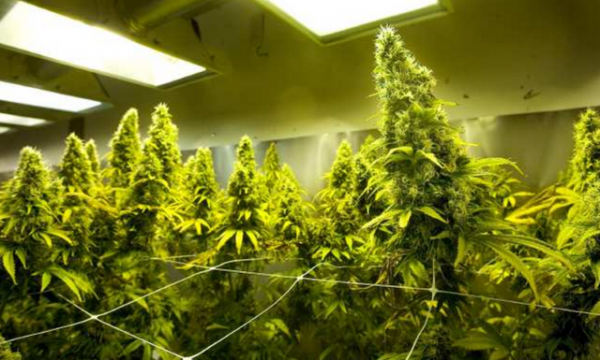Truth Seeker
New Member
Researchers from the University of Twente's MESA+ and MIRA research institutes have succeeded in visualizing THC, the active ingredient of cannabis, in intact plant structures. The substance is mainly found in trichomes (fine outgrowths) and in the small leaves around the flowers of the cannabis plant. Little or no THC is present in the stems and flowers. While these findings are not new, the study carried out by these researchers has shown their method (hyperspectral CARS Microscopy) to be a powerful tool for investigating the medicinal properties of plants. An article describing this research was published today in a scientific journal, the Journal of Biomedical Optics.
Plants have developed a range of mechanisms for synthesizing substances that happen to have medicinal properties. These mechanisms are often better or more efficient than those available to us in the lab. If we can find out how and where plants produce the requisite materials, we may be able to imitate nature. Using hyperspectral CARS Microscopy, University of Twente researchers have succeeded in visualizing THC, the active ingredient of cannabis, in intact plant structures (the study was carried out in the Netherlands, where cannabis is legally available). They found that THC mainly occurs in trichomes on the stigma and in the small leaves around the flowers. While scientists were already aware of this, the study carried out by these researchers has shown that it is now possible to visualize medically active substances in intact plant structures. Previous techniques required the plant to be pulverized, which made it difficult to determine exactly where in the plant the substance is located.
The study involved the use of hyperspectral CARS Microscopy to visualize THC in the cannabis plant (CARS stands for Coherent Anti-Stokes Raman Scattering). This technique uses two types of laser light and a microscope to target and visualize specific molecules. The University of Twente researchers have previously used this technique for a range of different purposes, such as detecting chemical substances in living cells or in pharmaceutical tablets.
The article is titled "In planta imaging of delta9-tetrahydrocannabinolic acid in Cannabis sativa L. with hyperspectral coherent anti-Stokes Raman scattering microscopy."

News Hawk- Truth Seeker 420 MAGAZINE ®
Source: phys.org
Author: phys.org
Contact: Phys.org : FAQ | Contact Us | Suggest a story idea
Website: Researchers photograph active ingredient in cannabis plants
Plants have developed a range of mechanisms for synthesizing substances that happen to have medicinal properties. These mechanisms are often better or more efficient than those available to us in the lab. If we can find out how and where plants produce the requisite materials, we may be able to imitate nature. Using hyperspectral CARS Microscopy, University of Twente researchers have succeeded in visualizing THC, the active ingredient of cannabis, in intact plant structures (the study was carried out in the Netherlands, where cannabis is legally available). They found that THC mainly occurs in trichomes on the stigma and in the small leaves around the flowers. While scientists were already aware of this, the study carried out by these researchers has shown that it is now possible to visualize medically active substances in intact plant structures. Previous techniques required the plant to be pulverized, which made it difficult to determine exactly where in the plant the substance is located.
The study involved the use of hyperspectral CARS Microscopy to visualize THC in the cannabis plant (CARS stands for Coherent Anti-Stokes Raman Scattering). This technique uses two types of laser light and a microscope to target and visualize specific molecules. The University of Twente researchers have previously used this technique for a range of different purposes, such as detecting chemical substances in living cells or in pharmaceutical tablets.
The article is titled "In planta imaging of delta9-tetrahydrocannabinolic acid in Cannabis sativa L. with hyperspectral coherent anti-Stokes Raman scattering microscopy."

News Hawk- Truth Seeker 420 MAGAZINE ®
Source: phys.org
Author: phys.org
Contact: Phys.org : FAQ | Contact Us | Suggest a story idea
Website: Researchers photograph active ingredient in cannabis plants


